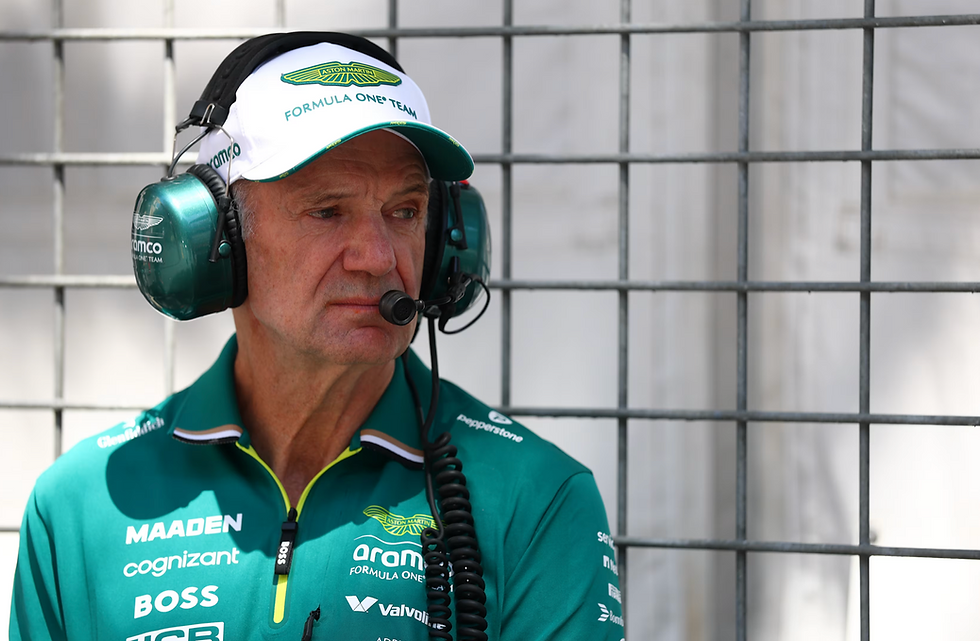Explaining the life-sized Lego Formula One cars that shortly took over Miami — and possibly beyond
- Sharifah Zaqreeztrina

- May 10
- 3 min read
Written by Sharifah Zaqreeztrina, Edited by Julia Bissessar
Before McLaren’s Oscar Piastri captured the spotlight once again with a victory at the Miami Grand Prix, the ten life-sized Lego Formula One cars cruising around Miami International Autodrome as part of the driver’s parade was the biggest highlight of the weekend.

To celebrate F1’s ongoing, multi-year partnership with Lego, these large builds debuted on the American circuit ahead of the race. A great experience to engage fans of all ages through creative design and technology. This marked a couple of firsts for the iconic toy brand, such as constructing large, drivable Lego-made builds and allowing two drivers to occupy each car.
Behind the machinery
Roughly 400,000 bricks per car, these functional models appeared to be close to their real-life counterparts. Each car was built with individual team colours and full liveries with team sponsors.
It was also an impressive, enormous effort of 26 engineers, designers and Lego builders. The project was brought to life halfway across the world in the Czech Republic, specifically Lego’s Kladno site. It took them eight months to turn the concept into a reality, equating to almost 22,000 hours of work.
Engineered with an electric drivetrain, a power steering system and hydraulic brakes used in F1 cars, these components made them not only faithful to their latest range of Lego F1 Speed Champions, but also fully drivable.
For safety, the bricks were then placed around a steel chassis. This would help to support the weight of the plastic pieces, which were attached together with special construction glue.
Inspired by a two-seater airplane design, each Lego replica also included an elongated cockpit area. This is to accommodate two drivers, where one of them had to sit behind his teammate.
Adding on to the size issue, engineering manager specialist Martin Šmida designed adjustable pedals. These pedals have the potential to shift backwards and forwards by a few centimeters, catering to the driver’s height.
The builds also featured a functional steering wheel (controls made of Lego) and a set of tires from Pirelli, F1’s official tire supplier. These helped to not only make the cars appear more authentic but also to allow basic movement.
"They are upscaled Lego Speed Champions sets,” said Jonathan Jurion, senior designer for the Formula One project. "We had to figure out how to make two people sit in it – that was quite a challenge. We mocked that up first, and we built the scale of the car around it, and it turned out pretty nicely that it actually has the size of the real F1 car. So that's pretty cool. We got the real Pirelli tires on them, which is really cool as well.”
As it unfolds
By the time the parade was set to begin, the track was already soaked due to afternoon rain earlier on. Williams’ Carlos Sainz commented regarding this,"I couldn’t believe it at first," Sainz said. "With the slick tire on the wet, it’s going to be fun."
“Hopefully we don’t have Legos going everywhere,” Oscar Piastri also remarked.
All placed under the usual two rows, the cars made their debut on track behind a safety car.
However, the race start was far from what we usually see at a Formula One Grand Prix. These Lego models can reach up to a maximum speed of 12 mph (20 kph), in stark contrast to the actual F1 cars that can carry up to 200 mph (321.8 kph) at the Miami track.
Each of these also weigh 1500 kg (3,306 pounds) - approximately twice the weight of the actual equivalents.
Within just a lap of Miami, it was pure chaotic fun. The lower speed of the cars did not prevent the drivers from unlocking their competitive nature and attempting to overtake. Some of the cars even ended up making contact with one another, as it was the case for McLaren and Alpine. Of course, that resulted in Lego ‘debris’ falling off the track.
Post-drivers’ parade
Despite being in Miami International Autodrome for only a lap, it surely brought out the lighthearted mood in the ultra-competitive time in the sport. As evident in the joy in both fans and drivers’ faces.
“That was the most fun drivers’ parade we’ve ever had,” said Ferrari’s Lewis Hamilton. “It was great fun.”
Two-time Miami Grand Prix winner Max Verstappen added: "I do think they will have to sweep the track, there is some LEGO debris! We were a bit slow in top speed and we slowly dropped back but I think it is more important they clean the track!"
Following the conclusion of the parade, all ten models will embark on a worldwide tour for future appearances, much to both Lego and F1 fans’ delight. For further information, fans can visit LEGO.com/F1.










Comments